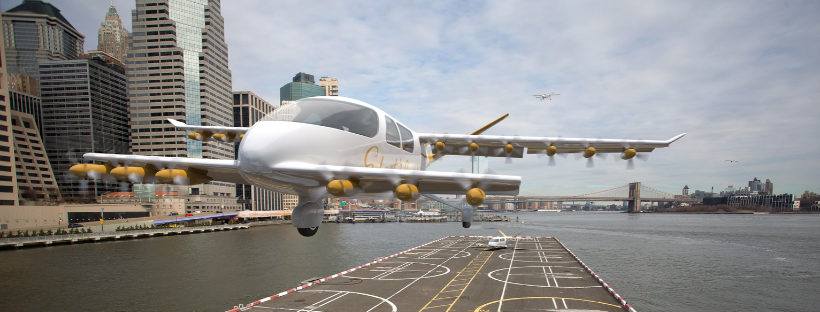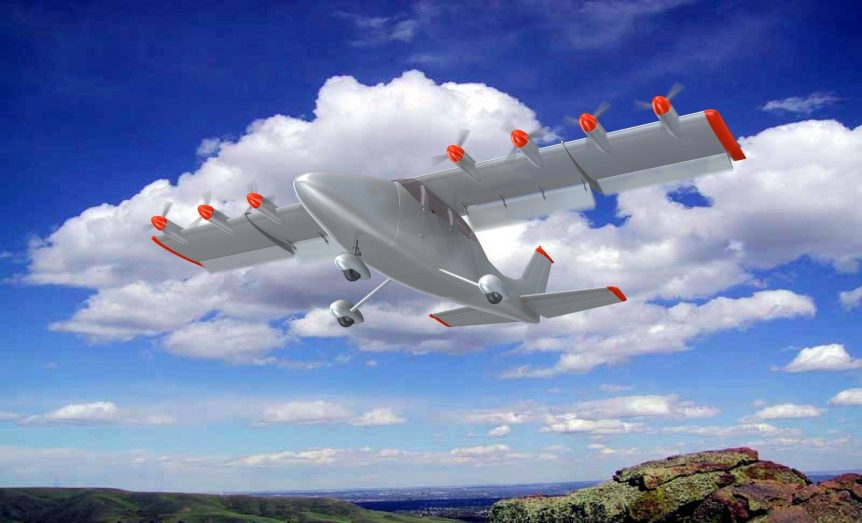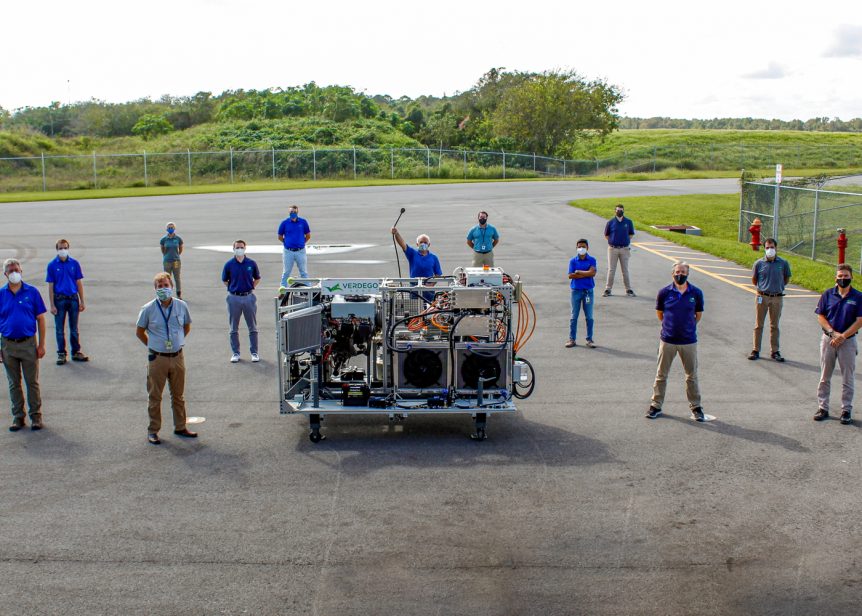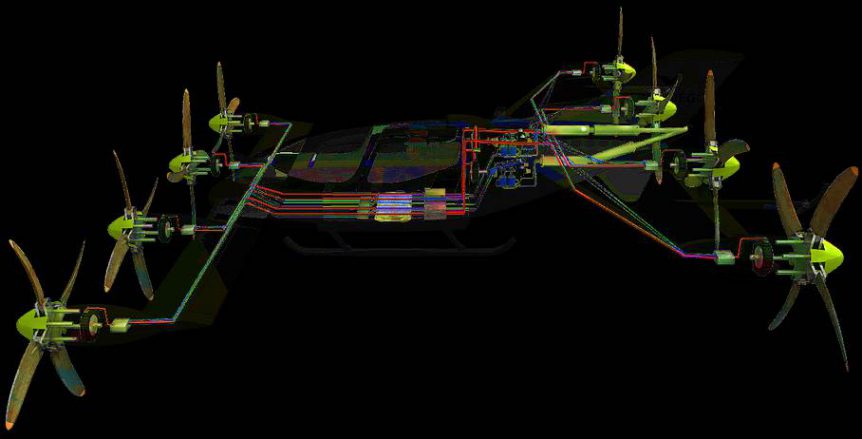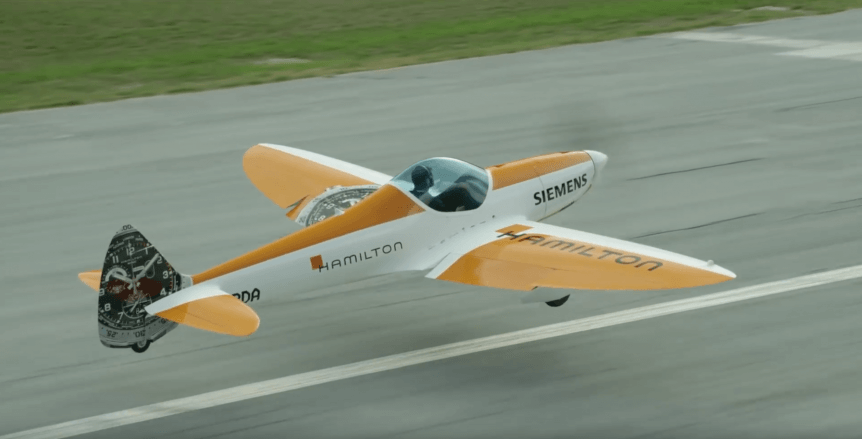Competition is growing in the electric Vertical Take Off and Landing market, with 407 potential builders listed in eVTOL News. Vertical flight takes power, though, and with available batteries limiting range, most such vehicles can make only short hops. Alternatives that allow speedier, longer flights, in the form of electric Conventional Short Take Off and Landing (eCSTOL) aircraft are in development. Such craft offer the benefit of requiring less power for takeoffs and climbs, being more aeronautically-based than power-based. Airflow, for instance, claims operating costs for their eCTSOL craft is one-third that of an eVTOL or helicopter. We will look at three eCSTOL craft that seem to making headway at this time. The infrastructure (in two cases below) to support their flight may already exist. Airflow Curt Epstein, writing in Future Flight, under the headline, “Infrastructure Needs for eSTOL and eVTOL Aircraft May be Closer than Imagined,” notes the “intense study” being undertaken. Speaking at the Vertical Flight Society’s Electric …
Airflow Moves toward Full Scale eCSTOL, AI
Airflow, a recent entry into the electric conventional short takeoff and landing (eCSTOL) market, is pushing forward into fielding a full-scale demonstrator. They are also testing the limits of Artificial Intelligence (AI) in nailing their landings. Airflow’s mission is spelled out in big ideas and bold fonts. “Freight without the wait. The first electric Short Take Off and Landing (eSTOL) aircraft for middle-mile logistics. 1 pilot, 500 lbs of cargo, 0 lbs of CO2.” Airflow’s concept illustrations show a twin-boom pusher with 10 distributed electric motors along the wing’s leading edge. Trying out their ideas for extremely short takeoffs and landings will fall to a modified Cessna 210. In the meantime, the team is advancing its concept at this time with a model Cessna 150 and showing some success at nailing their landings. Airflow calls its pilot assistance program, “Virtual Tailhook,” and it seems to serve that purpose in making landings possible in a tight space. Videos show the progress …
Erik, Eric, Dr. Anderson, Verdego and Hybrid Power
In a recent AVWeb Vodcast, Paul Bertorelli interviewed Embry Riddle’s Dr. Pat Anderson on the topic, “Why Electric Airplane Designers Are Turning to Hybrid Drives.” Battery energy-carrying capability has not fulfilled its promise yet, according to Anderson. The difference in energy density between fossil fuels and batteries is still too great to fulfill missions involving more than small craft and short distances for the most part. This outlook caused Dr. Anderson’s associates, Eric Lindbergh and Eric Bartsch to form Verdego Aero, dedicated initially to developing a Diesel-hybrid generator system. They corroborate Dr. Anderson’s sense of current battery technology, their web site answering “Why hybrid?” They explain, “Electric aircraft are at the forefront of aviation technology, but the energy density of current batteries isn’t yet high enough to support many mission types or aircraft designs. The power generation systems in the VerdeGo IDEP (Integrated Distributed Electric Propulsion) systems, which use Continental Jet-A Piston Engines, offer 4-8x the equivalent energy density of today’s …
VerdeGo’s Integrated Distributed Power System
Erik Lindbergh, grandson of the famed trans-Atlantic flight pioneer, has been paying his dues in aviation for decades, working to involve young people in career-building roles, and advocating for “green” aviation. His latest roles have found him mentoring a group of Embry Riddle students in developing an electric HK-36 (shown last year at AirVenture), and in developing one of the over 100 electric vertical takeoff and landing (eVTOL) potential sky taxis coming into public view. That sky taxi may not make it to market, but Lindbergh and partners’ Integrated Distributed Power system is headed that way. At the 2017 AirVenture, he shared the news that he was working on something exciting. That turned out to be the VerdeGo project, an eight-rotor eVTOL which he developed with co-founder Eric Bartsch and Embry Riddle Director of the Eagle Flight Research Center and Green Flight Challenge competitor Dr. Pat Anderson. Eric is Chief Operating Officer for VerdeGo and Pat is Chief Technology Officer. …
Verdego Aero – Another Variant on VTOL Travel
A Controversy for Starters Skeptics abound concerning the current spate of vertical takeoff and landing (VTOL) machines. The latest entry in the competition comes from the trio of Erik Lindbergh, Eric Bartsch, and Pat Anderson of Embry-Riddle Aeronautical University. Their Verdego eight-rotor machine looks a bit like the Airbus A3 Vahana, but has pusher, rather than puller, propellers on the rear wing. On his Linked In page, Bartsch jumps into an ongoing fray with his article, “The Inevitability of Short-Range Urban Aviation – Why I’m Betting Against the “Flying Uber” Skeptics.” It takes aim at the opposing point of view in “Going Direct: On the Insanity of Flying Ubers,” by Plane & Pilot writer Robert Goyer. To shorten the two arguments to their most primal levels, Eric Bartsch thinks sky taxis are coming and are inevitable. Goyer thinks the idea is insane and not supported by even basic physics or available mechanical systems. He doesn’t acknowledge an advantage to having …
Mike Friend’s Hybrid Electric Solution
Electric airplanes currently can give 15 or 20 minutes of intense aerobatics, or about an hour of more sedate cruising. What if you had a lovely little airplane that invited flinging it about the sky, but you still wanted to visit distant places? In 2005, Mike Friend owned a Silence Twister, a Spitfire-like single-seater registered as N787M, a nod to Mike’s employer, Boeing. He thought about making it a hybrid craft. Waiting for Batteries An early effort around 2010 by a German company to electrify the Twister did not produce a surge of orders, and Mike presented a 2011 symposium feature on making a hybrid out of the Twister to reduce its fuel burn while retaining its frisky character. That approach would have used a pod under the belly of the Twister, making it look like a fighter with an auxiliary fuel tank. Aerobatics combined with long-range seemed like a potential winner. Cute as it was, the concept was still …
Powering Imagination at the Museum of Flight
Powering Imagination, a symposium devoted to that premise and to encouraging the development of electric aviation, achieved both goals on Saturday, February 28 at Seattle’s Museum of Flight. Organized by Erik Lindbergh and Eric Bartsch, the gathering included two panel discussions and eight presentations that helped define where the world of electric flight might be heading. Between 10:00 a.m. and 5:00 p.m., presenters covered a lot of ground. Following Cale Wilcox, the Public Programs Coordinator for the Museum’s, introduction, Erik Lindbergh took the stage to explain the goals of the Powering Imagination organization, including making aviation clean, quiet, exciting and affordable. This democratization of flight mirrors aspirations of the CAFE Foundation and is reflected in the educational efforts made by Lindbergh’s organization. He explained that the X-Prize helped jump start private space flight, then asked how we translate that interest into helping form an electric aircraft industry. Development of this new industry may be crucial to aviation’s survival, with its …
Powering Imagination in Seattle
Seattle’s Museum of Flight on Boeing Field will host a one-day event, Powering Imagination, an electric flight symposium organized by Erik Lindbergh, grandson of Charles and Anne Morrow Lindbergh. Presentations will be held in the William M. Allen Theater at the Museum, starting at 10:00 a.m. on Saturday, February 28 and ending at 5:00 p.m. Admission is free, but RSVP to cwilcox@museumofflight.org to guarantee a seat. Topics include an update on the NASA LEAPTech aircraft being designed and built by Joby Aviation and powered by Joby motors. This 20-motor (!) aircraft will achieve a high coefficient of lift from the motors that distribute thrust over the entire span. Eric Lindbergh will talk about the Quiet Flight Initiative, a multi-pronged approach to designing and crafting airplanes quiet enough to be flown over national parks, areas now off-limits to noisy overflights. This is one facet of Powering Imagination, the other two Electric Flight and Alternative Fuels. Erik promises video updates from Europe and an …

